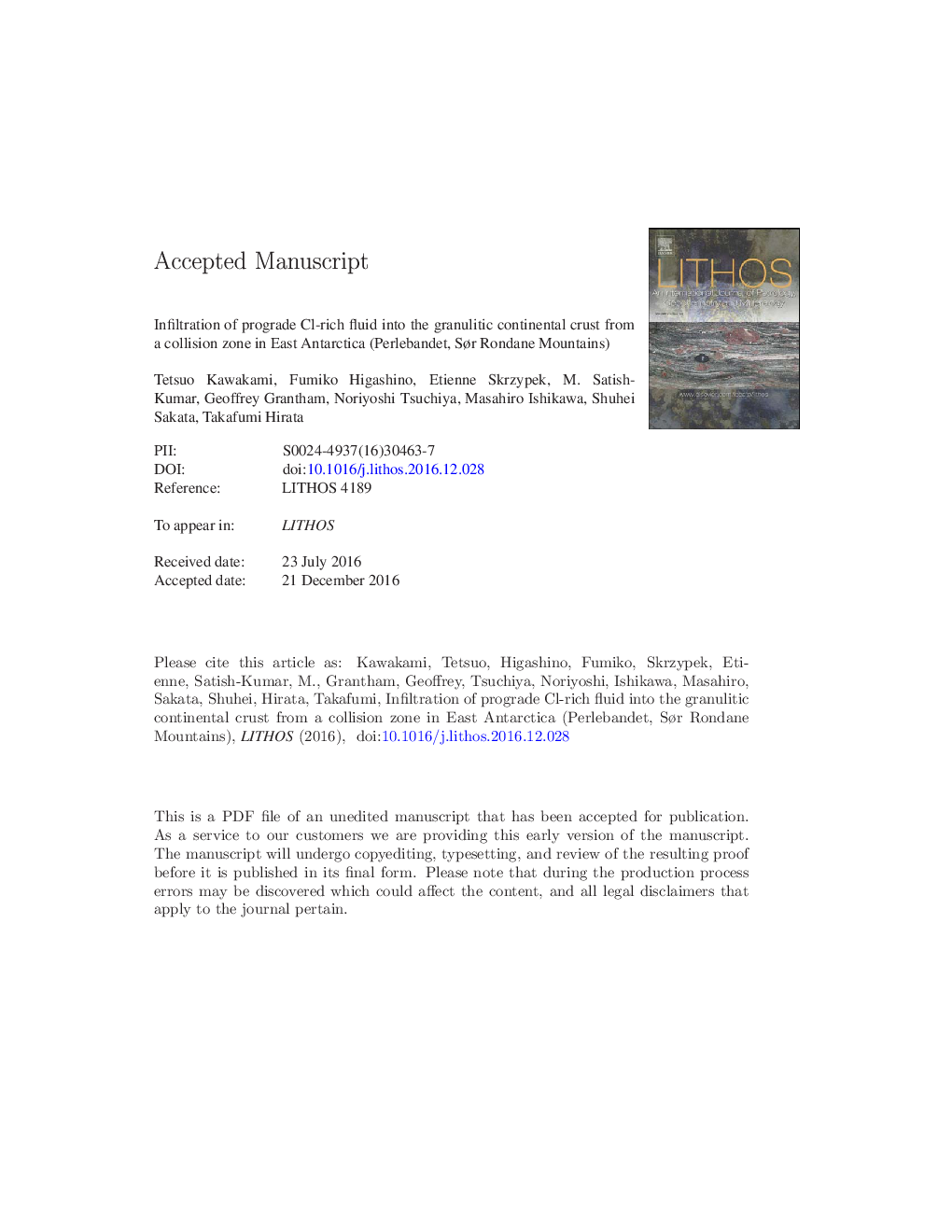| Article ID | Journal | Published Year | Pages | File Type |
|---|---|---|---|---|
| 5784273 | Lithos | 2017 | 76 Pages |
Abstract
Inclusion-host relationships among garnet, sillimanite, and Cl-rich biotite (Cl > 0.4 wt%) reveal that formation of Cl-rich biotite took place during prograde metamorphism in the sillimanite stability field. This process probably predated partial melting consuming biotite (Cl = 0.1-0.3 wt%). This was followed by retrograde, moderately Cl-bearing biotite (Cl = 0.1-0.3 wt%) replacing garnet. Similar timings of Cl-rich biotite formation in different samples, and similar f(H2O)/f(HCl) values of coexisting fluid estimated for each stage can be best explained by prograde Cl-rich fluid infiltration. Fluid-present partial melting at the onset of prograde metamorphism probably contributed to elevate the Cl concentration (and possibly salinity) of the fluid, and consumption of the fluid resulted in the progress of dehydration melting. The retrograde fluid was released from crystallizing Cl-bearing partial melts or derived externally. The prograde Cl-rich fluid infiltration in Perlebandet presumably took place at the uppermost part of the footwall of the collision boundary. Localized distribution of Cl-rich biotite and hornblende along large-scale shear zones and detachments in the SRM supports external input of Cl-rich fluids through tectonic boundaries during continental collision.
Related Topics
Physical Sciences and Engineering
Earth and Planetary Sciences
Geochemistry and Petrology
Authors
Tetsuo Kawakami, Fumiko Higashino, Etienne Skrzypek, M. Satish-Kumar, Geoffrey Grantham, Noriyoshi Tsuchiya, Masahiro Ishikawa, Shuhei Sakata, Takafumi Hirata,
